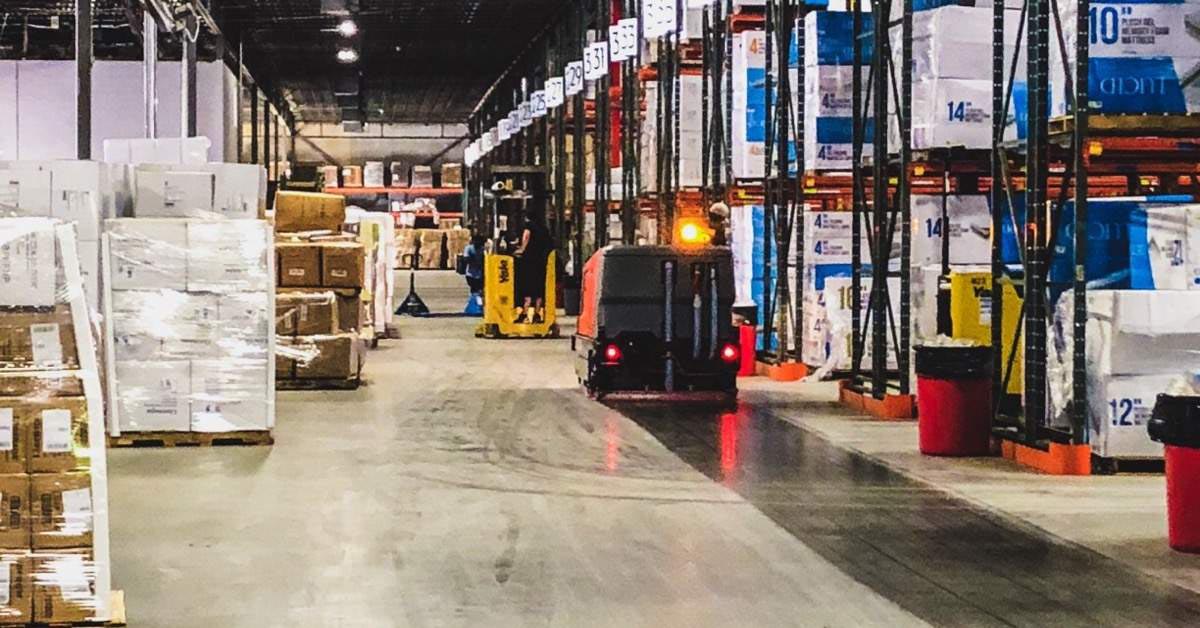
Proper maintenance will increase the life and maintain the appearance of your new coated floor. The frequency of maintenance will depend on your work environment and the amount of dirt and soilage that accumulates on your floor. Dirt and dust are abrasive and will quickly dull the finish and decrease the life expectancy of your coating. Liquids can stain and damage the finish. The greater the accumulation of soilage and the more harsh the environment, the more frequently you will need to clean your floor.
Develop a Floor Care Maintenance Program
- Sweep your floor every day with a broom or a walk behind or ride on floor sweeper.
- Scrub your floor at least once a week using the correct brush and floor cleaning detergent.
- Clean up spills immediately, before they have a chance to soften the coating and damage the finish.
- Place mats near entryways to minimize dirt and moisture.
- Repair any large gouges or scratches as soon as possible.
- Do not slide heavy machinery or materials across the floor without protection, as this will scratch and gouge the floor coating.
- Do not drop heavy or pointed items on the floor.
- Do not use stiff bristle brushes or brushes that contain wire.
- Do not use caustic cleaning solutions or solvents, as these will dull the finish.
How to Care for Your Coated Floor
Sweeping
Sweep floors daily to prevent dust and dirt from accumulating. If using an industrial floor sweeper, be sure to use a soft bristle brush. Stiff brushes may scratch the coating causing it to lose gloss.
Scrubbing
Use a 30:1 mixture of a neutral PH detergent and water. The frequency of scrubbing depends on the amount and type of soilage; however, all floors should be scrubbed at least once a week. High traffic areas such as aisleways should be scrubbed daily. Areas where oil and grease are frequently used require daily scrubbing.
An automatic industrial floor scrubber should be equipped with soft nylon brushes or white pads. More aggressive brushes or pads will dull the surface finish. Check out our guide to floor scrubber pads or call the experts at Factory Cleaning Equipment for help deciding which pad will be best for your application.
Solutions to Common Coated Floor Issues
Liquid Spills
Spills are safety hazards and should be cleaned up immediately. Quickly clean spills of caustics, acids, and solvents to prevent damage to your floor coating. Harsh liquids that are allowed to remain on the floor may soften, discolor, or completely remove a coating or sealer.
Scratches and Gouges
Avoid sliding heavy machinery, pallets, or sharp objects across the floor, as this will cut and gouge your coating. Breaks in the surface could allow moisture to weaken the bond.
Stain Prevention and Removal
If stains do occur, begin removal with a mild solution, progressing to stronger solutions until the stain disappears. Inks, dyes, and stains which are a result of chemical attack may never be completely removed. For your protection, always wear rubber gloves and eye protection when working with chemicals.
Grease and Oil Stains
Grease and oil may stain your coating, particularly if allowed to remain on the floor over 24 hours. Scrub the area with a neutral PH detergent. Follow the instructions on detergent labels.
Dried Spills and Stubborn Stains
A spill which is not immediately cleaned up may dry and leave a film or stain that is difficult to remove.
- If the spill has dried, use a plastic tool to remove any residue, taking care not to scratch the coating.
- If the stain persists, soak the area with a 25:1 solution of neutral PH detergent. Allow 10 minutes for soaking before scrubbing and rinsing.
- If the stain is still there, soak the stain with a 100% solution of neutral PH detergent. Allow this to soak for 10 minutes before scrubbing and rinsing.
- If detergent does not remove the stain, wet a clean cloth with a household bleach and wipe the area to remove the stain. (Note: The bleach may dull the coating.)
- If the stain still remains, try lightly sanding the area with 0000 steel wool. This may dull the coating if vigorously sanded or if the stain has penetrated too deep.
Rubber Marks and Burns
Rubber marks are deposits of rubber on or near the surface of a coating. In most cases, these can be removed by scrubbing with a strong concentration of detergent and water.
- Spot the area with a 100% solution of Burn Out detergent and agitate with a stiff brush or mechanical scrubber. Let soak for 10 minutes.
- Add water and scrub thoroughly.
- Rinse the area completely with water.
- If detergent does not remove the stain, wet a clean cloth with a household bleach and wipe the area to remove the stain. (Note: The bleach may dull the coating.)
- If the stain still remains, try lightly sanding the area with 0000 steel wool. This may dull the coating if vigorously sanded or if the stain has penetrated too deep.
Rubber Burns
Rubber burns are changes in the surface of a coating caused by heat and friction from spinning tires. In most cases, these cannot be removed.
Tire Stains
Tire stains are caused by tires sitting on top of a coating with an exchange of chemical components taking place between the standing tire and the coating. These, in most cases, cannot be removed without sanding.

